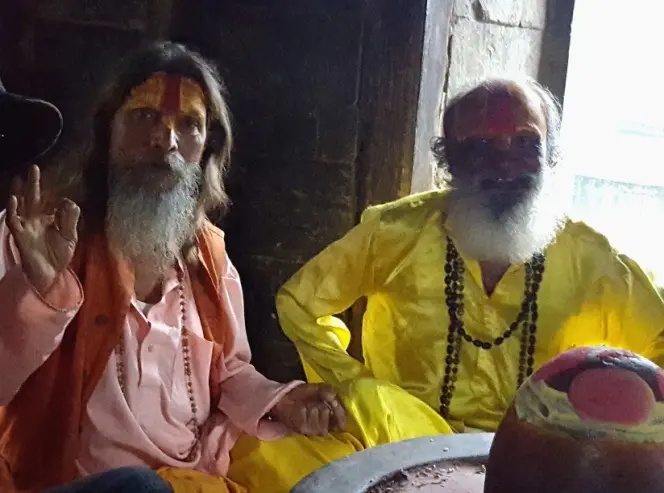Psychedelics #
Textbook Definition: Psychedelics alter perception and cognition, creating an experience which is different to ordinary consciousness. The psychedelic state is often related to forms such as meditation, dreaming, yoga, near-death or out-of-body experiences, and even break through to other realms of reality.
The following botanicals have been sampled and researched for inclusion within this section:
The use of hallucinogenic plants dates back to human pre-history. Indeed, there is evidence to support the theoretical proposition that consciousness itself was perturbed and invoked via long term exposure to the psilocybe cubensis mushroom.
The intrinsic importance of these botanicals is recorded and depicted across human civilisations in a wide variety of forms, including cave paintings, hieroglyphs, ancient art and stone carvings. Often they took centre stage in terms of cultural influence, with the Mixtecs of central Mexico, for example, worshipping a god for hallucinatory plants.
Frequently, their ritual use was believed to summon the most divine of experiences, spiritual in nature, and capable of opening a mystical conduit to sacred visions and realms.
This rich history of use and appreciation is a huge topic in its own right.
In the modern era, a number of proponents have emerged to raise awareness of these remarkable plants. Amongst these, none has been more prominent than Terence McKenna.
Through the Internet, his lectures have provided the source of countless YouTube videos, and his books continue to sell, despite his death in 2000. My own journey, in fact, may not have started without exposure to these materials.
Others have since taken up the challenge of emphasizing the importance of hallucinogenic botanicals, not just in terms of individual exploration and proven value to medicine, but potentially, for the future of mankind itself.
Finally, McKenna offered the following advice to potential explorers:
“These are bizarre dimensions of extraordinary power and beauty. There is no set rule to avoid being overwhelmed, but move carefully, reflect a great deal, and always try to map experiences back onto the history of the race and the philosophical and religious accomplishments of the species”
Consistent with this, some of the botanicals listed on the following pages have provided some of the most profound experiences of my life. Like others before me, these led me to consider them not to be mere drugs, but doorways, at the very least to knowledge, greater understanding, and higher levels of consciousness.



From Peruvian shamans (see ayahuasca) to Nepalese sadhus (above), botanicals are intrinsic to spirituality and higher states of consciousness
TERENCE MCKENNA’S THREE WAY TEST #
Despite all the words written about his “heroic dose” (five grams of dried mushrooms) and relating to his breakthrough adventures using a variety of hallucinogens and psychedelics, Terence McKenna was in fact safety conscious. He didn’t just drop any old drug into his body and then blindly run with the consequences.
Less known than many of his trademark propositions and theories is his “Three Way Test”. This is a simple guide: questions to ask yourself if you are considering the use of a plant or compound.
The three test questions are:
-
Does It Occur In Nature?
In his own words: “Does it have some tangentiality to what is already existing? Because obviously what exists, that’s nature, has undergone some vast winnowing process out of the set of all things which might exist.”
-
Does it have a history of human usage?
In his own words: “That is your FDA approval, because if you can point to a tribe of people who have been taking this plant or mushroom or whatever it is for millennia, and they don’t have miscarriages, tumours, cataracts, blindness, Down’s syndrome, eight fingers on the left hand or whatever it is, then you can be fairly confident that this thing is benign.”
-
Does it have an affinity to ordinary brain chemistry?
In his own words: “We don’t want to launch something on your brain that it can’t recognize at all, that it has no bio-synthetic pathways to degrade, that it has no receptors for, just some crazy thing, you know, 5-amino-3-triethyl-finphio-anaxidine or something. We don’t want that.”
If a compound or plant met these conditions, he considered it to be an excellent candidate for providing “spiritual gain at low physiological impact”. In other words, he believed that the potential benefits of using a sacred plant that passed these checks might be worth the potential risks presented.
He referred to this test on a number of occasions, notably during a workshop at Claremont College, Southern California in 1991 (quotes above), the video of which is currently available on YouTube. It is also described in his book, The Archaic Revival (Speculations on Psychedelic Mushrooms, the Amazon, Virtual Reality, UFOs, Evolution, Shamanism, the Rebirth of the Goddess) on pages 15-16.
Note that this process covers only candidate selection, which is self-evidently not the same as the adoption of safety procedures as employed in the use of a specific plant or chemical.